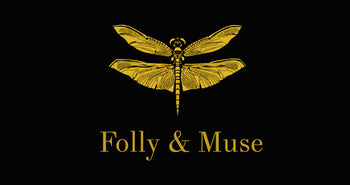
Although creating abstract pieces, you describe your work as ‘almost hyper-realist’; can you explain a bit more about this?
I say hyper-realist because I give a lot of attention to detail. Every drop, every splatter, every brushstroke, I try to do perfectly with well-defined and differentiated colours, creating a work that engages the viewer. They don’t see everything in just 5 seconds. In fact, the longer they look, the more they see. Although it sounds contradictory, friends, other artists and collectors are always telling me this, that they see this hyper-realism in the abstraction. They see everything from galaxies, figures or animals and it always surprises me. I really enjoy watching them as they look at my paintings and tell me what they see. I believe this is the essence of art, that everyone interprets the works from their own perspective and finds a way to appreciate the work. “Controlled accidents” are an important part of my work. They say life itself came to be by accident; that accidents happen sometimes at the right moment or in the right situation. Perhaps I am creating a certain life in my work and I don’t even realize it (laughing).

How did you develop your process using vibrating surfaces? How does this affect the final piece compared to painting flat?
As has happened to other painters throughout history, this inspiration came to me by accident. When I first began working on the Shock Value series, while preparing the materials, trying to get the viscosity and fluidity of the materials just right, I discovered that some unintentional splashes of paint created incredible effects. I became obsessed with trying to create “accidents” with a certain amount of control over how to create them. It was at this moment that I became interested in vibrations. For example, vibrations caused by speakers at full volume and the effects they create when liquid colour is poured over them or the splattering of colour that is caused when adding tint to a can of white paint from a certain height. I have always been very interested in the physics of materials and how they respond to vibrations applied to them. Actually, everything around us is vibrating although we are not always aware of it. There is a cosmic vibration that moves everything. These effects captivated me and I wanted to go further. With these ideas spinning in my head, I started to play and got satisfaction out of imagining and trying to recreate these dances and big bangs of colour created by vibration. I discovered other artists who were working with these same themes such as Kazuo Shiraga or Katrin Fridrik's and especially the photographer Markus Ruegels. I decided to try to obtain these effects in my paintings using movements and vibrations made by my own hands rather than a mechanical source of vibration such as speakers. Here again I return to the hyper-realism within the abstraction of my work. In the end, I am trying to capture and freeze in a moment in time an imaginary explosion of colour, where certain real effects are created intentionally, capturing movement and representing it on the canvas. I want to give the work a certain depth and 3D effect, characteristics that normally, with a few exceptions, are not typical of abstract painting. In most cases, there are only splatters or textures of colour which are not well defined and the majority of abstract works are flat. I wanted to go further and bring something more. I believe these themes of 3D, depth and sharp definition of color within abstraction are interesting and contemporary.


Your paintings have an almost digital quality visually, like a glitch on a computer monitor; has technology played a part in your work as an artist in any way?
No doubt that I have been influenced by technology. In fact, I think current technology has greatly influenced all artists and works made in the last years. I am inspired a lot by the internet, effects and experiments that are produced with pixels on a screen. The saturated colour of certain cartoons are also an inspiration. I have hundreds of images and screen captures of digital errors, including those of televisions when the signal fails. The image quality of mobile devices and television screens nowadays gives us incredible colour and surely transmits a subtle message to artists. Nowadays we are surrounded by colour, particularly saturated colours like those I use in my paintings. The challenge and difficulty is later to translate all of this information and ideas to the canvas. While my work in the end is contemporary, I use traditional manual means of applying the materials to the canvas.

Colour plays a big part in your work; do your plan your colour palettes for each piece or is it more of an instinctive decision during painting?
Yes, I plan out my colour palette ahead of time, beginning with the background colours and followed by the colours I will use after. I place a lot of importance not only on the colour, but on the backgrounds, creating textures with thick brushstrokes as a base which favor the final work. Instinct and impulse come after. I always know how I am going to start a painting, but I never know how I will finish. My technique obligates me to make decisions throughout the process; there is a constant dialogue with the work. Some of these decisions are risky, as every action is important in my work, I can’t go back or get rid of something once it’s there. Many times, just as I am finishing a piece, the last brushstroke or splatter of colour can ruin everything.

Alex Voinea working in his artist studio in Sitges in Spain near Barcelona.


0 comments